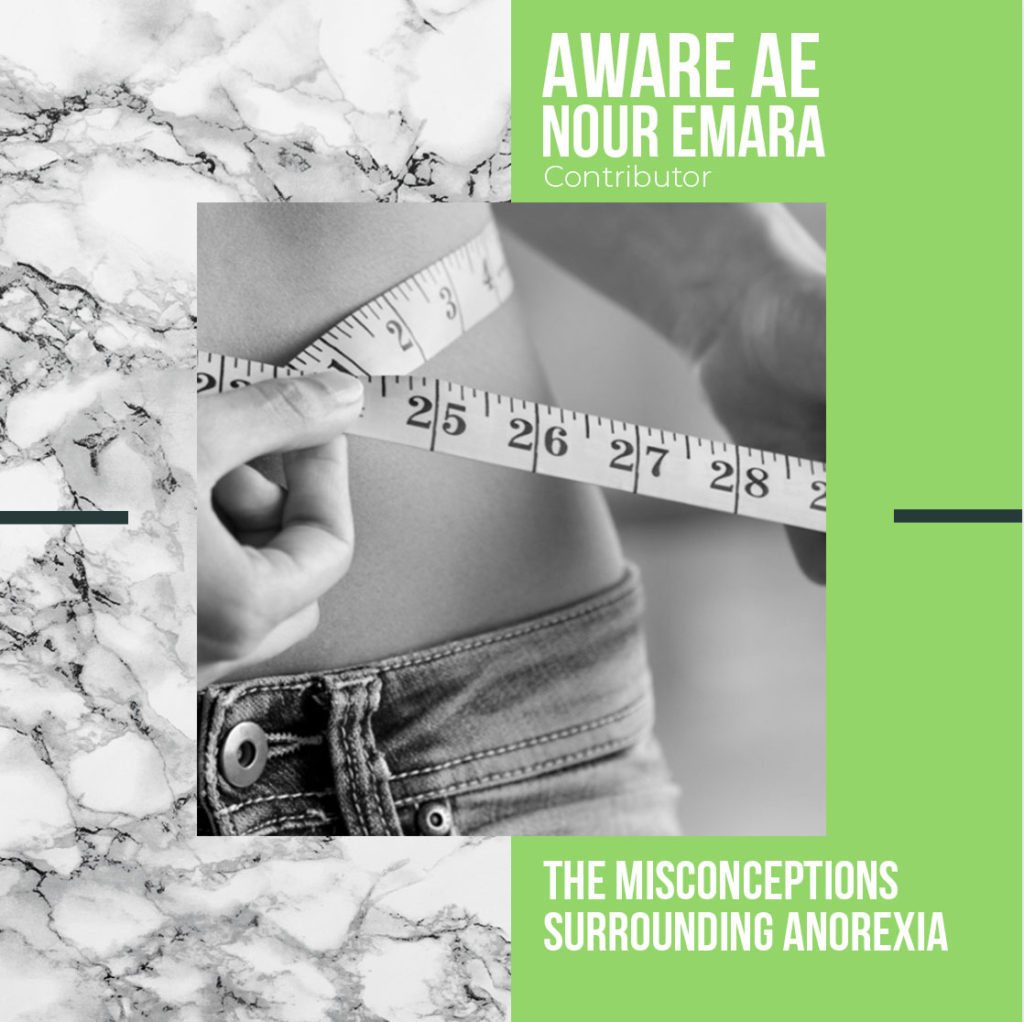Trigger warning: this article discusses a serious eating disorder and may be triggering.
Anorexia nervosa is a life-threatening eating disorder that receives masses of attention in the media but is actually less frequent than bulimia nervosa and binge eating disorder. It was previously characterized as an eating disorder that affects Caucasian, middle class underweight young females but is now known to affect individuals regardless of gender, age, body type, ethnicity, or social status. Despite the guarded prognosis associated with anorexia nervosa, there remains a number of common misconceptions around this complex condition that hinder people from receiving the treatment they need. This article will cover the 3 most common misconceptions –
- Misconception 1 – Anorexia nervosa only affects underweight individuals.
The most common misconception surrounding anorexia nervosa is that many people believe that they can tell if an individual has an eating disorder just by looking at their appearance. However, anorexia nervosa affects individuals of all shapes and sizes. Although this eating disorder is characterized by the inability to maintain a minimally normal weight and a devastating fear of weight gain, there is no specific weight criteria for anorexia nervosa. Furthermore, although the majority of individuals with this eating disorder are underweight, anorexia nervosa affects individuals who are of normal weight and those who are overweight as well.
- Misconception 2 – People with anorexia nervosa simply do not eat.
Anorexia nervosa is more complex than simply not eating or eating the bare minimum amount of food necessary for life. Whilst extreme energy restriction is common in anorexia nervosa, it is not the case that people with anorexia nervosa do not eat. Extreme restriction and eating much less than is required for the body to function optimally are associated with anorexia nervosa. However, in many cases, people with anorexia eat regularly and frequently, although this eating behavior follows strict rules. For example, they may only consume certain “safe” food that they know to be within a certain caloric limit, keep a rigid food log tracking every calorie they consume, satisfy hunger with non-caloric beverages, and avoid energy-dense foods. This behavior is maladaptive and people practicing these behaviors may suffer extreme health consequences related to malnourishment even if they are eating regularly.
- Misconception 3 – Anorexia nervosa only affects young women.
Anorexia nervosa does affect more women than men. However, this disorder can affect all individuals regardless of gender, age, body shape, ethnicity, or social class. Men actually account for as much as 10% of those suffering from an eating disorder. Experts and researchers believe that anorexia nervosa is probably underdiagnosed in black individuals and males because of a low index of suspicion and slightly different symptom presentation with the stigma associated with male anorexia leading to delays in men seeking and receiving treatment, which can impact their long-term health.
Everyone’s situation is unique, and many factors interact in a complex and multi-layered manner to cause this complex, life-threatening disorder.
